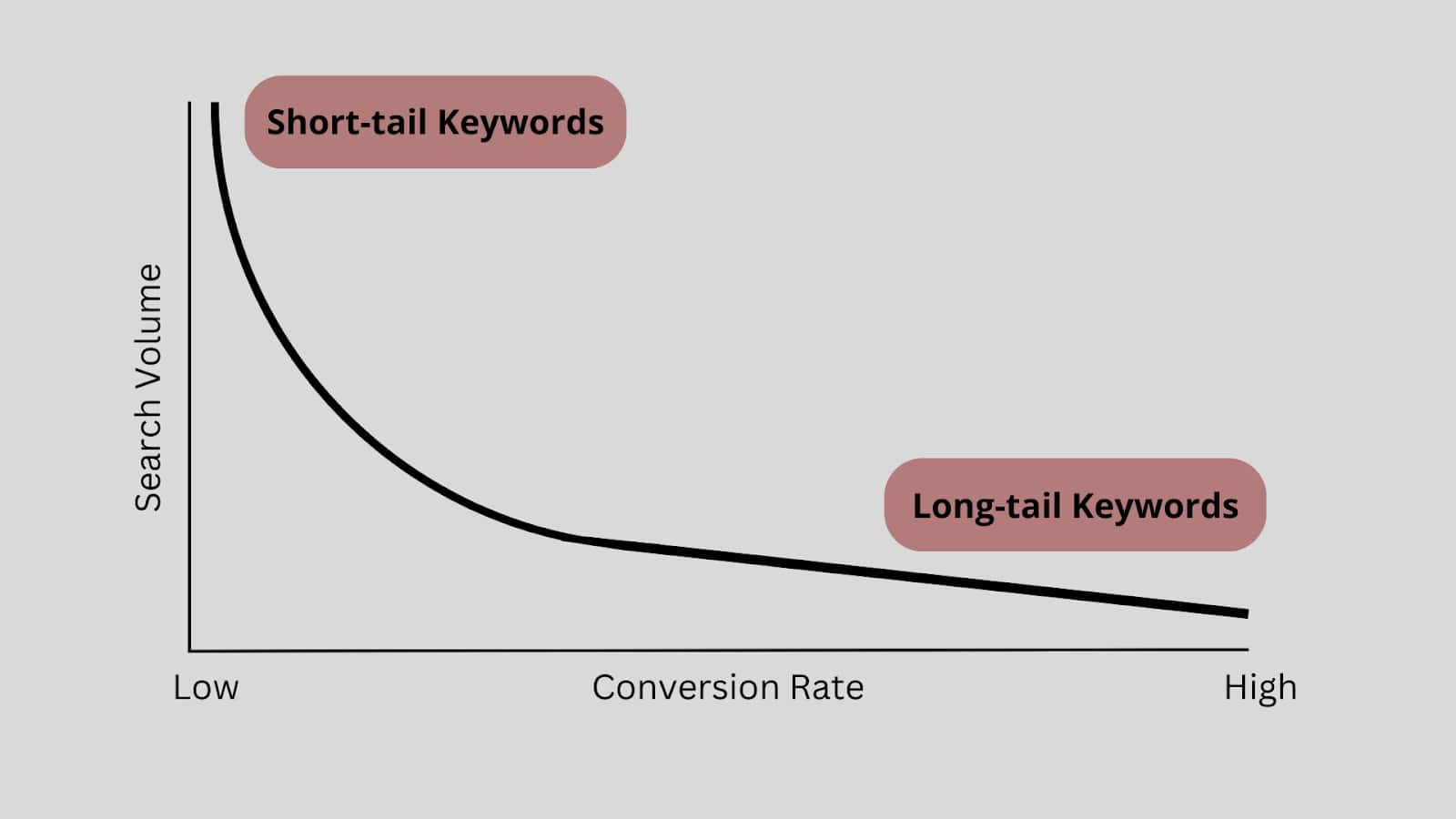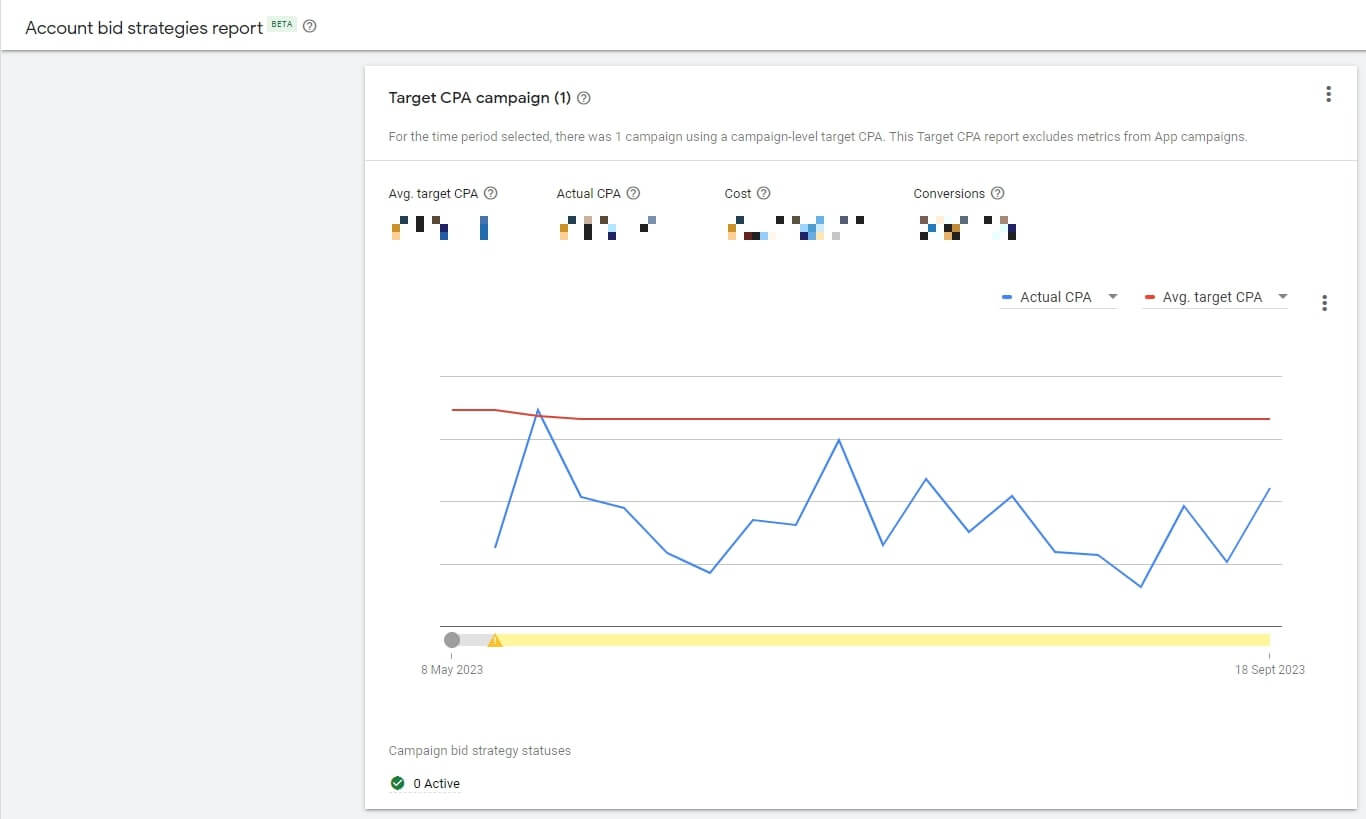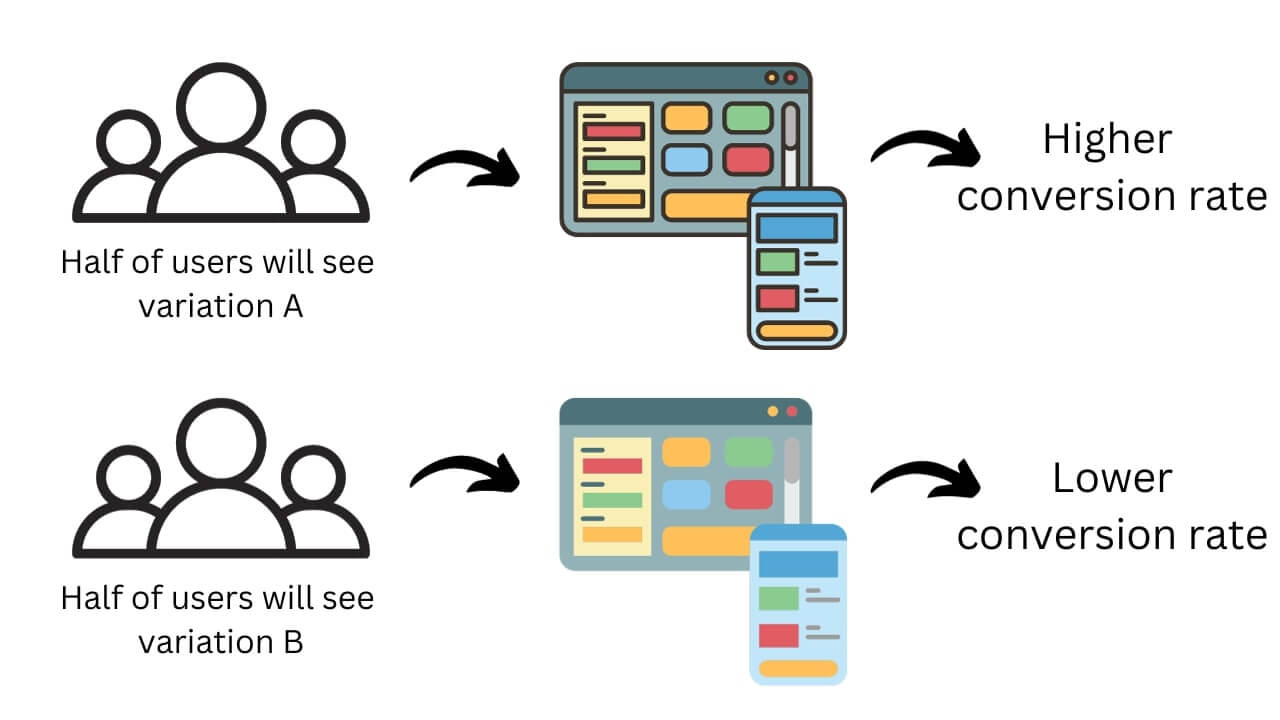Google Ads creation: Expert advice for targeting niche clients
Example: You run a family law practice, and a potential client in your area searches for “divorce attorney near me” on Google. With a well-crafted Google Advert, your firm’s name could be at the top of their search results, instantly capturing their attention.

Example: If your firm specialises in immigration law, you want your Google Ads to reach individuals in your area who are searching for terms like “immigration attorney”. By targeting sector-specific keywords, you increase the likelihood of reaching relevant prospects who are genuinely interested and in need of your services.
Contents
Understanding Your Target Audience
Identifying Your Ideal Clients
1. Practice Area Specialisation
To begin, it’s essential to define your niche. Focusing on specific practice areas allows you to tailor your ads to meet the unique needs of potential clients seeking those services.
If your firm specialises in personal injury law, your Google Ads can focus on keywords related to accidents, injuries, and compensation, ensuring you broadcast your services to clients seeking assistance in this area.

2. Geographic Location
Geographic targeting is a powerful way to ensure your ads are seen by potential clients in your service area. Whether you serve a local community or multiple regions, pinpointing your location settings is crucial.
Example: If your firm has offices in multiple cities, you can create location-based ad campaigns that target users searching for legal services within a specific radius of those areas. You can also set up your ads to only show for specific cities, towns, and regions.

3. Demographic and Psychographic Factors
Consider the demographics (age, gender, income) and psychographics (interests and behaviours) of your ideal clients. This information will help you create ad content that resonates with them on a personal level.
Example: If your firm specialises in estate planning, you may want to target older individuals who are more likely to be concerned about securing their assets for the future.
Conducting Market Research
1. Competitive Analysis
To stand out in a competitive legal space, analysing your competitors’ strategies is vital. Identify what works for them and where there might be gaps that your firm can fill.
Example: If you notice that your competitors are not running ads for a specific practice area, such as intellectual property law, you can seize this opportunity to establish a presence in that niche.
2. Keyword Research
Keyword research is the cornerstone of effective Google Ads. By identifying high-intent keywords related to your practice areas, you can ensure your ads appear when potential clients search for specific legal services.
Example: If your firm specialises in immigration law, you’ll want to target keywords like “visa application help” or “citizenship attorney” to capture relevant traffic.
3. Client Personas
Developing client personas involves creating detailed profiles of your ideal clients. This step humanises your audience, making it easier to tailor your ad messaging to their unique needs and preferences.
Example: Imagine your client persona is “John,” a middle-aged professional seeking estate planning service. Your ad content can speak directly to John’s concerns, such as preserving wealth for his family’s future.
Crafting Compelling Google Ad Campaigns
Keyword Selection
1. High-Intent Keywords
High-intent keywords are search terms that indicate a strong desire to act. These keywords should be the core of your ad campaign.
Example: If your firm handles bankruptcy cases, keywords like “bankruptcy solicitor near me” or “file for bankruptcy” signal high intent and should be prominently featured in your ads.

2. Long-Tail Keywords
Long-tail keywords are longer, more specific phrases that can capture highly targeted traffic. While they may have a lower search volume, they often convert at a higher rate. Long-tail keywords are also usually cheaper due to their low search and competition.
Example: For a family law firm, long-tail keywords like “child custody lawyer for fathers in London” can enable you to reach a highly specific audience.

Ad Copywriting
1. Writing Persuasive Ad Headlines
Your ad headlines are the first thing potential clients see. They should be attention-grabbing and convey the unique value your firm offers.
Example: A compelling headline for a personal injury law firm might be “Personal Injury Lawyers – Get the Compensation You Deserve – Free Consultation!”
2. Creating Relevant Ad Descriptions
Ad descriptions provide an opportunity to expand on the headline and convey crucial information about your services, benefits, and offers.
Example: In the ad description, you can mention your years of experience, successful case outcomes, and the personalised approach your firm takes to each case.
Ad Extensions
1. Utilising Sitelink Extensions
Sitelink extensions enable you to include additional links in your ads, directing users to specific pages on your website. Use these to highlight different practice areas or key pages.
Example: If your firm handles both personal injury and family law cases, include site links that lead users to dedicated pages for each practice area.

2. Callout Extensions for Key Selling Points
Callout extensions are perfect for showcasing your firm’s strengths and unique selling points. Use them to highlight awards, accolades, or special offers.
Example: “Over 20 Years of Legal Excellence,” “Free Initial Consultation,” and “Dedicated Client Support” can be compelling callout extensions.
3. Location Extensions
If your firm has multiple office locations, use location extensions to display your addresses alongside your ads.
Example: A user searching for “immigration solicitor” in Northampton will see your ad with the location extension, making it clear that your firm has a presence in their city.

Landing Page Optimisation
1. Matching Ad Copy to Landing Page Content
Ensure that the content on your landing page aligns with the message in your ads. Consistency builds trust and encourages users to take the desired action.
Example: If your ad promises a free consultation, your landing page should prominently feature information about scheduling a consultation.
2. User-Friendly Landing Page Design
Your landing page should be easy to navigate and mobile-friendly. Make it simple for visitors to contact you or learn more about your services.
Example: Implement clear call-to-action buttons, such as “Contact Us” or “Request a Callback,” that are prominently displayed on your landing page.
Setting Up Targeted Google Ads Campaigns
Campaign Structure
1. Organising by Practice Area
Structure your campaigns to align with your practice areas. Each campaign should focus on specific legal services to maintain relevance. This allows you to match your adverts and landing pages specifically to a prospects’ search.
Example: If your firm handles criminal defence and immigration law, create separate campaigns for each area with distinct keywords and ad groups.
2. Location-Based Campaigns
If you have multiple office locations, set up location-based campaigns to target users in different regions effectively.
Example: Create separate campaigns for each office location, tailoring ad content and budgets based on the needs and competition in each area.
Ad Groups
1. Grouping Keywords by Relevance
Within each campaign, organise your keywords into ad groups based on relevance. This ensures that your ad copy closely matches the keywords, improving ad quality.
Example: In a personal injury law campaign, create ad groups for keywords related to car accidents or slip and fall incidents.
2. Ad Customisation within Ad Groups
Customise your ad content within ad groups to cater to specific client needs related to the group’s keywords.
Example: For a divorce law ad group, create ads that address different aspects like child custody, property division, and spousal support.
Budget Allocation
1. Daily and Monthly Budgeting
Set clear daily and monthly budgets for each campaign. Distribute your budget based on campaign priorities and performance goals.
Example: Allocate a higher daily budget to your personal injury campaign, which may have higher competition and a larger potential client base, and a lower budget to a niche campaign like immigration law.
2. Bidding Strategies
Choose bidding strategies that align with your campaign objectives. Experiment with manual and automated bidding to find the most effective approach.
Example: If your goal is to maximise conversions within a set budget, consider using a target CPA (Cost-Per-Acquisition) bidding strategy.

Ad Scheduling
1. Optimising Ad Display Times
Analyse when your target audience is most active online and schedule your ads to display during those peak times.
Example: If you find that potential clients are more likely to search for legal services during weekday evenings, adjust your ad scheduling accordingly.
2. Dayparting for Maximum Impact
Dayparting involves adjusting ad schedules based on the day of the week or time of day. Use this strategy to ensure your ads are visible when they are most relevant.
Example: If you offer employment law services, you might schedule your ads to run during business hours on weekdays when HR professionals and employees may be seeking legal guidance.
Monitoring and Measuring Success
Utilising Google Ads Analytics
1. Click-Through Rate (CTR)
Keep a close eye on your CTR to gauge how well your ads are resonating with users. A higher CTR indicates that your ad copy is compelling.
Example: If you notice that an ad highlighting “Free Consultations” has a significantly higher CTR than other ads, consider incorporating this messaging into other campaigns.
2. Conversion Tracking
Implement conversion tracking to measure the actions users take after clicking on your ads. This could include form submissions, phone calls, or appointment bookings.
Example: By tracking conversions, you can determine which campaigns and keywords are driving the most valuable leads. If you find that “family law consultation requests” convert well, allocate more budget to that campaign.
3. Quality Score
A high Quality Score indicates that your ads are relevant and provide a positive user experience. Remember, Google wants to give its users the best advertisements possible, despite the budget offered. Due to this, ads with a higher quality score can benefit from reduced cost-per-clicks, lowering your overall spend. Make sure to monitor your Quality Scores and make adjustments to improve them.
Example: If you notice that the Quality Score for a particular keyword is low, review the keyword’s relevance to your ad copy and landing page to make necessary improvements.
A/B Testing
1. Testing Ad Variations
Conduct A/B tests by creating different ad variations to determine which elements, such as headlines or descriptions, resonate best with your audience.
Example: A/B test two different headlines in your divorce law campaign—one emphasising experience and the other focusing on compassion. Analyse which one generates more clicks and conversions, and optimise your campaigns accordingly.
2. Landing Page Testing
Experiment with variations of your landing pages to identify the most effective layouts, content, and calls to action.
Example: Test two versions of a landing page for your personal injury law campaign. One version emphasises case results, while the other highlights client testimonials. Determine which page leads to more form submissions.

Continuous Optimisation
1. Ad Copy Iterations
Regularly update and refine your ad copy to stay relevant and engaging to your audience. Incorporate new messaging based on client feedback and trends.
Example: If your criminal defence ad copy mentions “24/7 availability,” and you notice an increase in late-night clicks, consider emphasising this point further.
2. Keyword Performance Analysis
Review the performance of your keywords and remove any that are underperforming. Invest more budget into the keywords that generate valuable leads.
Example: If you discover that certain long-tail keywords related to “employment law for wrongful termination” consistently result in high-quality leads, allocate more budget to those keywords.
Adapting to Changes in Client Behaviour
Keeping Up with Industry Trends
Stay informed about the latest developments in both the legal and digital marketing industries. Adapt your Google Ads strategy to align with emerging trends.
Example: If there is a sudden increase in searches for “remote legal services” due to a shift in client behaviour driven by a global event, consider adjusting your ad messaging to highlight your firm’s virtual consultation options.
Leveraging Seasonal Opportunities
Identify seasonal trends that could impact your practice areas. Tailor your ad campaigns to leverage these opportunities.
Example: If your firm handles tax law, prepare for an influx of clients searching for tax-related assistance during tax season. Run targeted ads that address tax-related concerns.
Adapting to Client Feedback and Behaviour Shifts
Listen to client feedback and adapt your ad campaigns accordingly. Client behaviour may change over time, and your ads should reflect these evolving needs.
Example: If you receive feedback from clients that they prefer to communicate via video consultations rather than in-person meetings, update your ad copy to emphasise your firm’s video consultation options.
Compliance and Ethical Considerations
Adhering to Legal Advertising Rules
Be aware of and comply with the legal advertising rules and regulations specific to your jurisdiction. Ensure that your ad content follows ethical guidelines set by legal associations.
Example: If your state’s legal advertising rules require disclaimers or specific language in attorney advertisements, incorporate these requirements into your ad copy.
Ethical Approaches to Ad Campaign
Conduct your ad campaigns ethically by refraining from making misleading claims or false promises. Uphold the integrity of your legal practice in all advertising efforts.
Example: If your ad promotes “affordable legal services,” ensure that your pricing is transparent and accurately reflects your fees to avoid any ethical concerns.
Conclusion
Harnessing the power of Google Ads is not just an option but a necessity for law firms. They offer an unparalleled opportunity to connect with individuals actively searching for legal assistance, bringing your services to the forefront.
As you embark on your Google Ads journey, remember that it’s not just about the setup but the ongoing commitment to improvement and adaptation. With each adjustment and refinement, you inch closer to connecting with those niche clients who need your legal expertise.
You may be wondering how to streamline the Google Ad creation process. This is where Kinetic Traffic comes into play.
Kinetic Traffic specialises in helping law firms navigate the complexities of Google Ads. Our team of experienced digital marketing experts understands the legal industry and the unique challenges it poses.
Get started today, and embark on a journey that will connect your legal expertise with your niche clients.
Lead your law firm towards the best results.
Get in touch with our team and let’s talk about your marketing needs.










